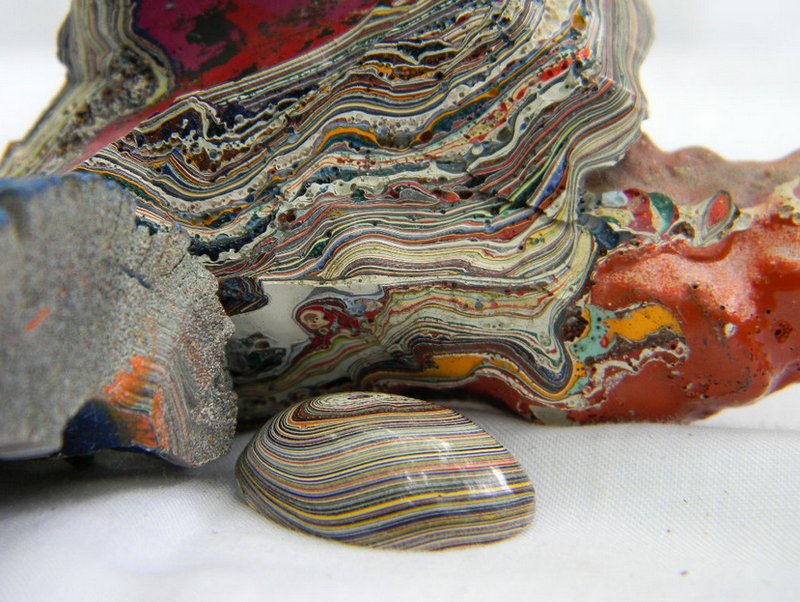Fordite

Pictured above (via Flickr) is what looks like two hunks of rock — the larger in its unrefined state and the smaller one in a polished form. It’s easily recognizable by its thin, multicolored layers. It’s called Fordite. You used to be able to find it in some areas of Michigan and various other places, although it’s increasingly rare and we’re not likely to find an undiscovered cache of it any time in the future.
That’s because Fordite isn’t a naturally occurring mineral. It comes from automobile manufacturing plants.
If you buy a car, you can typically choose from a wide array of colors, regardless of the model you purchase. In recent years, the painting process, like most other parts of the production process, has become machine-run and automated. But that wasn’t always the case. For years, the paint — typically enamel paint — was sprayed on by hand. It was an inexact science, to say the least, and not all the paint ended up on the cars. As Jalopnik explained, “overspray accumulated on the tracks and skids where vehicles were painted, and over the course of dozens – sometimes hundreds – of coats, the paint would build up. These layers would wind up in the paint-curing ovens where it would harden under the heat.”
The hardened, excess paint didn’t build up forever, though. Fordite.com — yes, there is (or once was) a website dedicated to this non-natural mineral — explains that “eventually, the paint build-up would become obstructing, or too thick and heavy, and had to be removed.” Often enough, an opportunistic worker would not only remove the caked-on paint but keep it for him or herself. And as seen above, the raw specimens could be cut and polished into beautiful gemstone-like trinkets.
As a result, Fordite became a trendy “stone” for jewelry. As the New York Times reported, Fordite jewelry sells for as much as $300 a piece — a price justified by how rare it is, even if it is just wasted car paint. Only a limited amount of Fordite was made and collected, after all, and there’s no more being made today.
More images of Fordite, as well as the one above, can be found at This Is Colossal.
Bonus Fact: There’s one car which still has some of the paint job applied by hand — the Rolls Royce. As CNN Money reported, most Rolls Royces come adorned with a “long, thin dead-straight line that goes from the just behind the headlights to just before the taillights” which is hand-painted. Because the paint bonds to the coat of paint beneath it nearly instantly, there’s no room for mistakes, so Rolls Royce has to find people who are very good at making very straight, six meter lines without error. It requires a certain expertise. A former pub sign painter named Mark Court, profiled in that CNN Money article, currently fills that role in one Rolls Royce factory — it’s Court’s only job, and he’s the only one in his factory who does it. (He is, however, searching for an apprentice.)
From the Archives: Fordlandia: Ford’s corporate-run city in Brazil, designed to grow rubber trees.
Take the Quiz: Name the one-syllable words that rhyme with “Ford.”
Related: Fordite jewelry.
Image via Eliane Sweeney, original available via Flickr.
